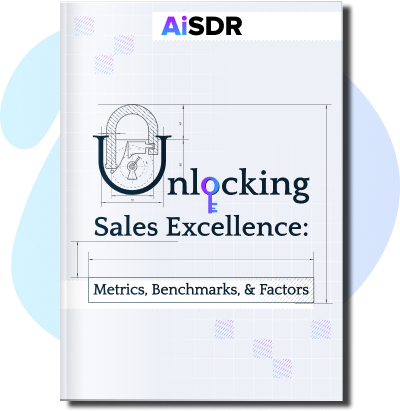Using Sales Personas for Lead Generation

Sales personas reflect your sales strategy, tactics, and best practices. Get 5 tips on how to use sales personas for lead generation.
Every business has its ideal customer.
Nike and athletes. Netflix and binge-watchers. Starbucks and coffee lovers.
But in the world of B2B sales, businesses turn to a different strategy to secure new customers.
They use sales personas and buyer personas to help drive lead generation.
What is a sales persona?
A sales persona is a fictional representation of a member of your sales team, such as:
- Sales development representative
- Business development representative
- Sales representative
- Account executive
Small and micro startups might even create personas based on their founders if they’re relying on a founder-led sales strategy.
Depending on the situation, you might even create a sales persona that replicates a member of your C-suite, such as the CEO, CSO, or CTO.
In most cases, you give this persona a name (even if it’s the name of your founder) and flesh it out with detailed information:
- Demographics (age, gender, location, job, income)
- Motivations and goals (what they want to achieve)
- Customer challenges and pain points
- Common customer objections and how to address them
- Communication style
- Approach to selling (sales framework and tactics)
In the end, a sales persona should closely reflect how you want your sales reps to speak and interact with customers. You can even create individual personas to try out A/B test different frameworks, such as the Justin Michael Method or AIDA.
Note: Sales personas are different from a buyer persona or customer persona. While there is a lot of information overlap, sales personas represent people who sell (your sales team) while buyer personas represent people who buy (your customers).
Buyer personas are also very similar to an ideal customer profile (ICP) in sales. However, a buyer persona represents the person who makes buying decisions at a company, whereas an ICP represents the type of company you’re selling to.
Differences between sales and buyer personas
Long story short, sales personas mirror the people who sell your product while buyer personas mirror the people who make the purchase.
Let’s say you’re selling resume screening software.
You know that 68% of your customers are hiring managers in recruitment agencies or mid-sized businesses, and 74% are female, aged 30-45. They’re looking for a product like yours to help them with the daily hurdle of sifting through resumes.
Your buyer persona might look like this:
| Name | Maggie |
| Gender | Female |
| Age | 35 |
| Location | Seattle, WA |
| Job Title | Hiring manager |
| Industry | Software development |
| Motivation/Goal | Fill vacancies quickly with the best candidates |
| Challenges | Overwhelming number of resumes arrive, which are difficult to sort manually; subpar performance of existing resume screening solutions that miss or distort important information |
| Preferred communication channels | LinkedIn, WhatsApp, Email |
| Approach to buying | Must get the purchase authorized by her senior; unlikely to switch as long as the software performs up to expectations |
This buyer persona makes it easier to visualize and understand your customer.
At this point, you might ask yourself “Why bother creating a sales persona on top of that?”
If you’re the only person on your sales team, you’re probably right (not 100% though!).
But once you start building out your sales team, new hires need to know which tactics, frameworks, and approaches they need to use to win customers like Maggie.
Giving them a sales persona that breaks all of this down will make your life much simpler. And as a bonus, you can even use it for yourself as a reference.
Your sales persona should include the most successful sales tactics that work potential buyers:
- Sales approaches (e.g. SPIN, Challenger, target accounts)
- Examples of good sales emails
- Words to avoid (especially if you’re using the persona to configure AI software)
- Objections and their counters
Here’s an example of what a sales persona template might look like:
| Name | Fred |
| Gender | Male |
| Age | 27 |
| Location | Seattle, WA |
| Job Title | Sales representative |
| Industry | Recruitment software |
| Motivation/Goal | Get a demo booked |
| Objections | [Specific objections and answers] |
| Communication channels | LinkedIn, Instagram, WhatsApp, Email |
| Sales approach | [Specific sales tactics] |
| Email examples | [Specific email examples] |
Especially if you’re using personas for AI, it’s a good idea to limit personas to one job title and one motivation.
While buyer personas can highlight sales tactics, it doesn’t neeed to. Instead, buyer personas should outline pain points, needs, behaviors, preferences, and demographics while sales tactics can be built into sales personas.
Benefits of using sales personas for lead generation
You can leverage sales personas for lead generation and conversion in these ways:
- Targeted outreach – With a well-defined sales persona, reps better understand the challenges and goals of their leads. That helps them identify the right people and reach out to them.
- Fine-tuned messaging – A sales persona informs you about what language, tone, and content will be meaningful to your customer, letting your team tailor their messaging accordingly.
- Consistency and efficiency – Sales personas ensure a consistent approach across the team. They streamline the training of new sales reps by providing a clear model to emulate. This will also drive down lead generation costs.
For best results, you’ll want a separate sales persona for each customer segment if your product targets multiple customers.
Alongside Maggie the Hiring Manager, you might have Alex, a start-up founder who’s juggling recruitment and other tasks because his team doesn’t have a dedicated HR specialist yet.
Luckily, you can still use the Fred sales persona for Alex, though you might need to swap tactics and emails since hiring managers and start-up founders respond differently and have different pains.
Or you can craft a persona that replicates your CEO or founder in order to spark a conversation among founders.
Just try not to go overboard by making so many personas that it gets hard to keep track and update.
Tips for creating a sales persona for successful lead generation
To generate leads with a sales persona, it must reflect your sales strategy, tactics, and best practices.
Here are five tips to help you out.
Tip 1: Take your clients’ characteristics into account
To build your sales persona, you need to create a detailed buyer persona so that your sales reps know what type of leads they should pursue.
Find out what demographic traits most of your customers share, what social media they frequent, and which sales tactics they respond to. If you lack actual customer data, you can research your competitors and leverage those insights until you have your own.
Tip 2: Nurture your leads consistently over time
After making first contact with a lead, keep contacting them.
Research shows that in today’s environments, a lead needs an average of eight nurturing emails to convert. Following up on all promising leads should become a part of your sales persona.
Tip 3: Emphasize your best sales tactics
When a certain tactic keeps winning over more leads than any other, it should be added to your sales persona.
You can also specify the order of tactical priority and eliminate underperforming ones. And if you’re using AI personas, you can emphasize which tactics to use by marking persona prompts in JSON.
Tip 4: Prepare to handle objections
Most consumers make objections when you engage them in personal sales.
Whenever that happens, write down the objection, your response, and how they reacted.
Then review all the objections you’ve heard, compile a list of the most common ones, and build them into your sales persona. For the final touch, create an answer to each objection that your team can use to win over this lead.
Tip 5: Consider future sales opportunities
Look at customers who’ve stayed with you for a considerable time or have purchased more than one product, then ask yourself “What differentiates them from the rest?”
Use your answers to update your sales persona with recommendations to target this type of lead for upsell and cross-sell opportunities.











